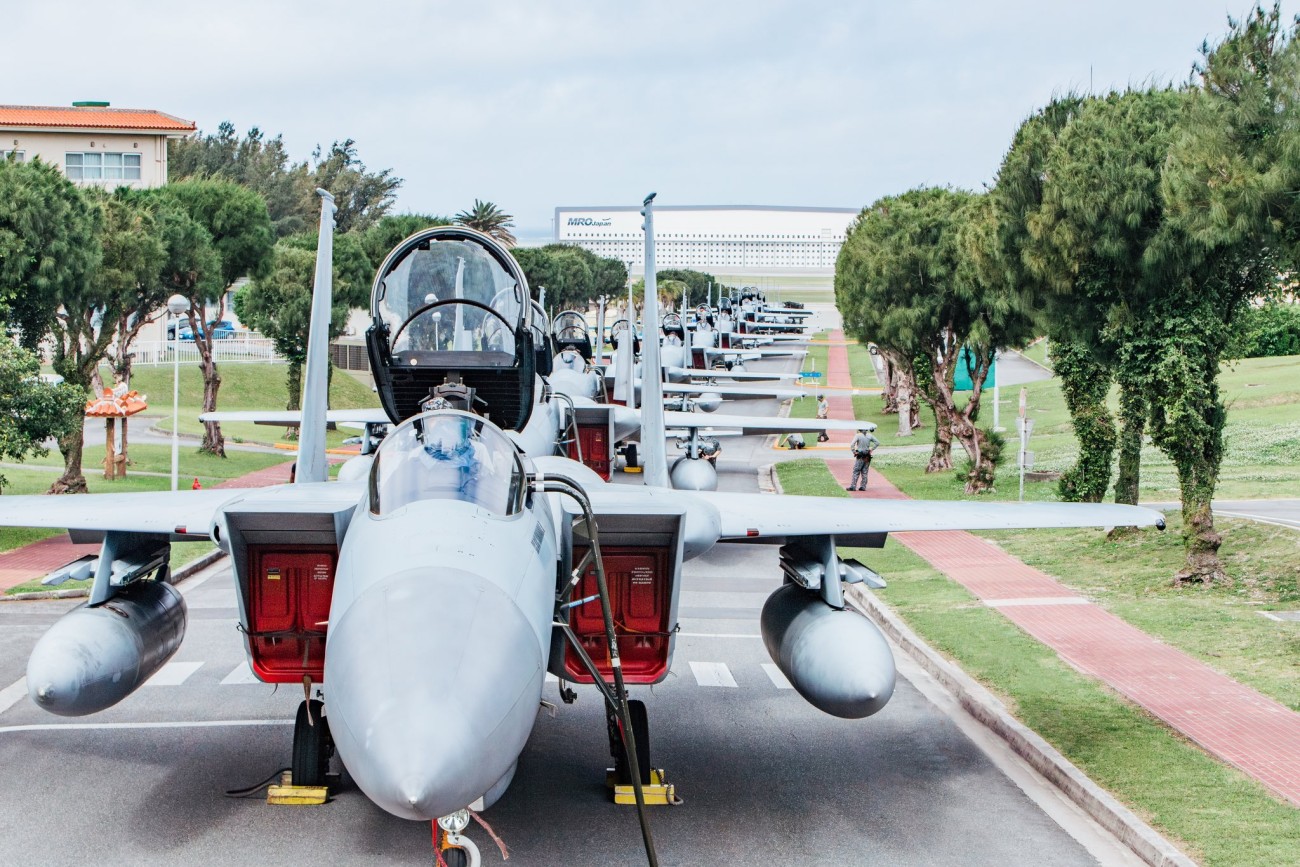In a precautionary move prompted by a tsunami warning following the Taiwan earthquake on April 3, the Japanese Air Self-Defense Force’s (JASDF) Naha Air Base evacuated its F-15J fighters to higher ground, leading to some of these aircraft being parked on civilian roads.
Images released by the X account of the Japan Air Self-Defense Force’s Naha air base showcased the F-15s positioned on public roads. This evacuation, prompted by the tsunami warning, aimed to safeguard the aircraft from potential damage in the aftermath of the seismic activity.
Officials from Naha Air Base explained the rationale behind this measure. “Following the tsunami warning on April 3, Naha Air Base scrambled to assess the damage situation in the Sakishima area, and at the same time evacuated F-15 fighter jets and vehicles to higher ground to protect equipment,” stated the base’s official account.
The base added, “We are constantly maintaining this equipment and defending the southwest region to respond to any unforeseen circumstances.” The presence of these advanced aircraft underscores Naha Air Base’s strategic importance.
Naha Air Base, nestled along the East China Sea coast of the southern part of Okinawa Island, is a crucial military installation for Japan. While only a dozen F-15s were visible in the released photos, the base hosts two F-15J squadrons, collectively comprising nearly 40 of these high-performance fighter jets.
4月3日の津波警報に伴い那覇基地では
先島方面の被害状況確認のためスクランブル発進を行い、同時に装備品を守るためF-15戦闘機や車両などを海抜の高い場所へ退避させました。我々は常に不測の事態に対処すべく
このような装備品の保全を行うと共に
南西域を防衛しています。#航空自衛隊 pic.twitter.com/8j9I6ayevw— 航空自衛隊那覇基地 (@Naha_AirBase) April 5, 2024
Despite the unconventional sight of fighter jets parked on city streets, it was pointed out that the aircraft remained within the perimeter of the airbase, albeit relocated among other facilities away from the usual apron area.
The recent earthquake in Taiwan has served as a stark reminder of the vulnerability of military assets to natural disasters. In the aftermath of the powerful earthquake, the Taiwanese Air Force reported slight damage to six F-16 fighter jets stationed at the Hualien Air Base.
The proactive measures taken by the Japanese military, such as evacuating aircraft to higher ground in response to potential threats like tsunamis, are not unprecedented.
Similar precautions have been observed in the past, aiming to prevent losses of aircraft. Following the Great East Japan Earthquake and Tsunami in 2011, a significant number of military aircraft, particularly Mitsubishi F-2 jets, endured severe damage; some of them were destroyed.
The extensive damage resulted in lengthy repair processes for many aircraft, spanning several years before they were fully operational again.
Japan’s F-15 aircraft are integral to defending the nation’s borders against potential threats, especially intercepting intruding Russian and Chinese aircraft.
These highly capable fighter jets are tasked with maintaining the integrity of Japan’s territorial boundaries, standing as formidable deterrents against any unauthorized or hostile aerial activities.
The presence of the United States Air Force (USAF) has added another layer of defense in the region, with a rotational contingent of fighters stationed at the nearby Kadena Air Base, Okinawa.
Originally, the USAF maintained a permanent deployment of F-15C/D Eagles at Kadena Air Base, Okinawa, bolstering the area’s defensive capabilities.

However, in a strategic shift announced in late 2022, a decision to phase out the permanently based F-15C/D Eagles at the base was taken. Since then, the USAF has opted for rotational deployments, utilizing different types of fighters to maintain fighter capacity at the Air Force base.
Presently, the United States Air Force (USAF) has commenced the deployment of F-22 Raptor fighter jets at the Kadena Air Base in Okinawa, Japan.
Touching down on March 28, 2024, these jets, operated by the 19th and 199th Fighter Squadrons, signify a significant advance in enhancing air combat capabilities in what is commonly referred to as the “Keystone of the Pacific.”
The deployment is aimed to synergize with other heavy, reconnaissance, and both fourth and fifth-generation aircraft, reinforcing a continuous and robust fighter presence in the region.
Meanwhile, there have been indications suggesting the potential return of a permanent Air Force fighter presence at Kadena, possibly in the form of the service’s new F-15EX fighters.
Such developments signify a strategic reevaluation and recalibration of military assets, also reflecting the evolving security landscape and reaffirming the enduring partnership between the United States and Japan to safeguard regional stability.
- Contact the author at ashishmichel(at)gmail.com
- Follow EurAsian Times on Google News




